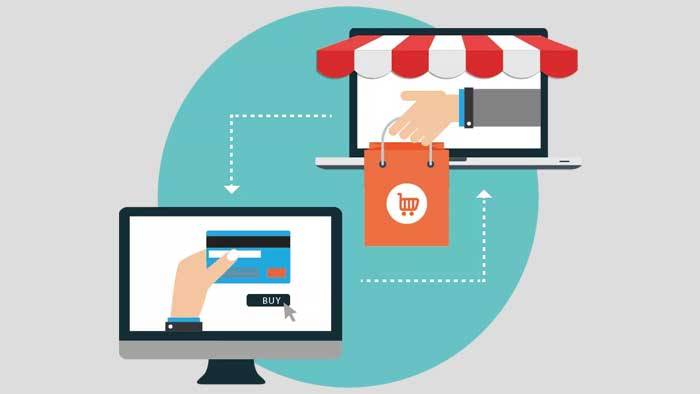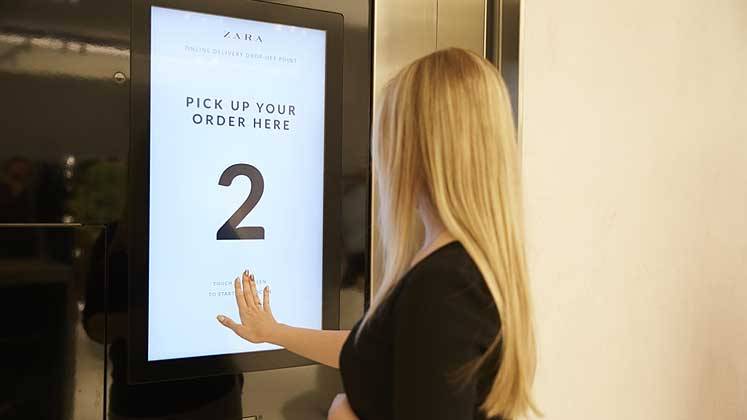
Personalised experience, customisation and flexibility are the few key areas that are highly in demand now. A report by retail touchpoints states that by 2021, 90 per cent of retailers will offer Buy Online Pick Up In Store (BOPIS), and 75 per cent will be able to identify specific customers in the store and have the ability to customise their visits.
According to eMarketer, with online shopping now accounting for almost 10 per cent of total retail sales, e-commerce has a significant impact on traditional retailing and this will continue in the following years. In Q2 of 2018, almost 62 per cent of e-commerce traffic was generated by mobile itself, and in such a scenario, operating through just one channel will not solely help the retailers achieve their goal. There has to be a strong online presence as well, besides creating a good flexibility of shopping for the customers.
How will BOPIS help?
BOPIS implementation can help retailers drive extra foot traffic to the store from an e-commerce channel. Customers’ visit to the store puts them in an immediate position to buy additional merchandise, or make an impulse purchase further helping the retailers to upsell other complementary products. The face-to-face interaction of the customer with the store executive, puts retailers in a better position to meet their expectations. It further results in better customer relationship formation which is not the case in parcel shipping. Moreover, shipping from store location allows online and mobile consumers to receive quicker inventory than if it is shipped from a centralised DC, improving customer service and forecasting brand loyalty. A number of well-known brands like Zara, Target and Lifestyle have already implemented the technology and are reaping these benefits; therefore it’s now mandatory for the store retailers to meet the competition and stay upfront with the trend.
How to start?
To start with the concept, it’s important to have an online presence, create an e-commerce platform and start online business. Then one should start with an omnichannel application roadmap with a goal of selecting a compatible platform that improves company inventory visibility. These platforms provide a high-level view of inventory across all locations, including warehouses further assisting in inventory management tasks at the store level, so that managers can monitor stock levels and reorder products accordingly. Retailer must also have an integrated Point of Sale, retail engagement solution with the ability to view inventory across the channel. Once these solutions are integrated, retailers can begin to offer more advanced fulfilment options in response to consumer buying behaviour, such as shipping from the store, picking up at store or dropping shipment from vendor, because they will have a clear knowledge of inventory availability and Sell-through Rate at each location.
Solutions for seamless shopping experience
Order Dynamic s
The Click & Collect solution by Order Dynamics company lets retailers provide a seamless shopping experience to their customers, having all the channels, suppliers and departments completely synchronised with one another. Order Dynamics software as a service provides infinite scalability for rapid crosschannel growth. The system focuses on four critical pillars including inventory visibility; distributed order orchestration; store fulfilment and customer service, helping retailers develop a seamless omnichannel environment.
The system works by keeping a track of the inventory among all the distributed inventory ports like store, warehouse, supply chain and anywhere the stock is maintained. This further provides a single view of inventory, giving enterprise level control about how to expose, allocate and threshold all the stock across all sales channels.
The second pillar, distributed order orchestration, provides a centralised interface and hub for accepting all crosschannel orders to efficiently process them, bringing all the orders from the e-commerce websites. These orders now run through automated pipeline managing fraud detection. Payment processing, customer notification, invoice creation, shipping label and printing, stock allocation and order modification are all completed through dynamic algorithms intelligently determining how and where to distribute orders across the network, warehouse stores.
The third pillar, store fulfillment, has efficient associate tooling and dashboard for complete order visibility and easily manages printing packing slips and shipping labels. Once communication is done with the customers, all of these can be processed with minimal training. The last pillar of customer service lets the retailers address all the customers’ issues within no time like returns, exchange, modifications and esquires. Few of the immediate benefits that are delivered using this software are improved peak order managing efficiency, optimised fulfilling decisions and reduced shipping cost by 40 per cent. This further increases stock turnover and reduces inventory, maximises investment in store network and drives more foot traffic. As a result, increased number of footfall can be seen, with improved conversion metrics and online revenue by 20 to 30 per cent. The face-to-face interaction with the customers lets the retailer build a better relationship, enabling faster, greater customer loyalty with consistent shopping experience for the consumers.
Unicommerce
Another such similar software is provided by U nicommerce Omnichannel which allows customers to browse through latest collections of brand online and provides flexibility to later pick their choice of product from brand’s retail store nearest to them. Unicommerce provides key features to enable offline ‘touchpoints’ for a customer looking to experience a brand in an omnichannel way. The solution ensures a flexible pick up, return or exchange of goods from the nearest store. It also offers some other benefits including delivery from the nearest store, ensuring lower delivery time leading to superior customer experience. The system can be set up based on pincodes, city, state etc., in addition to defining the priority of stores so as to control the fulfillment experience. The store operations staff can do all the order processing on a mobile app, which can be easily done in the store, or integrated with the Point of Sale solution.
The software capabilities also let the retailers to accept returns or exchange offline from the customers who have ordered online. It can also be integrated with leading Point of Sale systems (Ginesys, Logic, etc.) as well as ERP systems (Microsoft AX, Microsoft Navision, SAP, Oracle, etc.) to ensure that the online and offline systems are always in sync, in terms of inventory and order management. “Unicommerce has been instrumental in helping us run our business with our brand and vendors. Many of our vendors manage inventory and fulfillment via Uniware. From the early marketplace days, Unicommerce has been able to set up integration quickly and this collaboration played a vital role in Myntra’s evolution as India’s largest fashion marketplace. And then, Unicommerce Support was just a phone call away in case of any need,” said Jeyandran Venugopal, CTO, Myntra .
Research shows shoppers using BOPIS have increased 53 per cent in 2018 over 2017. In response, 93 per cent of retailers plan to implement the convenient service by 2023. Implementation of BOPIS has created many success stories for global retailers. Realising the profit numbers, there has been some advancement to the technology for further improving the solution capabilities. A new self-pickup model BOPIS 2.0 termed by NRF, is a revolutionary strategy which eliminates the traditional way of picking up an order. With this robotic system, the customers can automatically receive their packets from the machines installed without any human interaction.
Self-automated machine Cleveron 402 or 401 by Cleveron is a shining example of BOPIS 2.0 strategy which assists in Click & Collect order delivery. The system is capable of automatically issuing a parcel to the customer. These terminals can be stalled inside the store where the customers will have to come, operate the machine and pick their parcel. The working starts when the courier or shop associates insert a parcel into Cleveron. The machine then automatically measures the parcel’s height and then stores the parcel on the shelf. Depending on the height, Cleveron finds an appropriate shelf for the parcel. In the meantime, the end user is notified, when the parcel will be ready. He/she gets an order code or QR code which he/she inserts or scans on the Cleveron terminal. Reading the code, the machine identifies the parcel and issues it within a second.
Inditex’s success with Click & Collect pickup solution
In 2017, the integration of Inditex stores and online was a reality in a total of 49 of 96 markets in which Inditex brands are present. The group’s online sales grew by 41 per cent in 2017, reaching 10 per cent of the total, 12 per cent in all the markets which have online presence. According to Inditex’s 2018 results, online sales grew by 27 per cent to € 3.2 billion, reaching 14 per cent of sales in markets having both bricks-and-mortar and online stores. The evolution of the integrated store and online model is prompting the expansion of the group’s online presence. As a result, all of the group’s brands plan to be available online worldwide by 2020.
With the company’s commitment to provide a seamless shopping experience to its customers, the company has decided to experiment with Cleveron 402, a robotics-based Click & Collect parcel delivery terminal that turns manual in-store parcel delivery into automated pickup self-service. The company plans to implement these systems in Zara showrooms, providing customers the possibility to pick up their purchases in-store in just a few seconds.

The system works by generating an order PIN or QR code for customer purchase. When a customer places an order on Zara.com and selects the store as the pickup point, the order’s PIN and QR code is generated. A notification message is then sent to the customer when the order is fulfilled and ready for pick-up. On arriving at the showroom and parcel terminal, the customer enters the PIN or scans the QR code. On accepting the code, Cleveron 402 issues an online order to the customer within seconds.
This system eliminates and simplifies the job for an employee who inducts the parcels, and also for the customer since they don’t need any help from the store personnel. This also reduces the parcel delivery time as the procedure takes only seconds, ensuring a positive customer experience.
Cleveron 402 parcel terminal was piloted at Zara’s A Coruña store in October 2017. Its success ensured Inditex that it could use the same practice in its flagship store at London Stratford, which opened in May 2018. The in-store Click & Collect is handled by two Cleveron 402s, which together can hold up to 2,400 parcels. The famous Zara Vittorio Emanuele store in Milan consists of a Cleveron 402 which is covered with antique brass to match the renovated ultra-chick and luxurious look.

Post a Comment